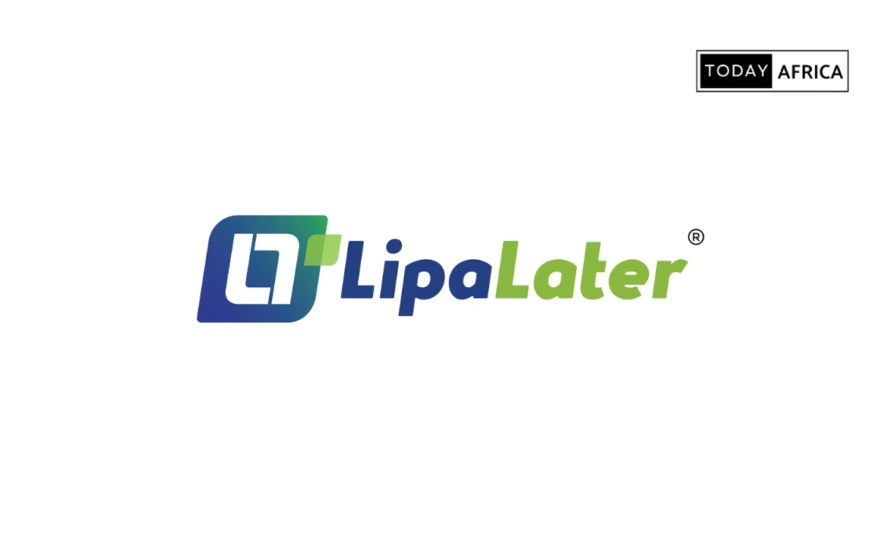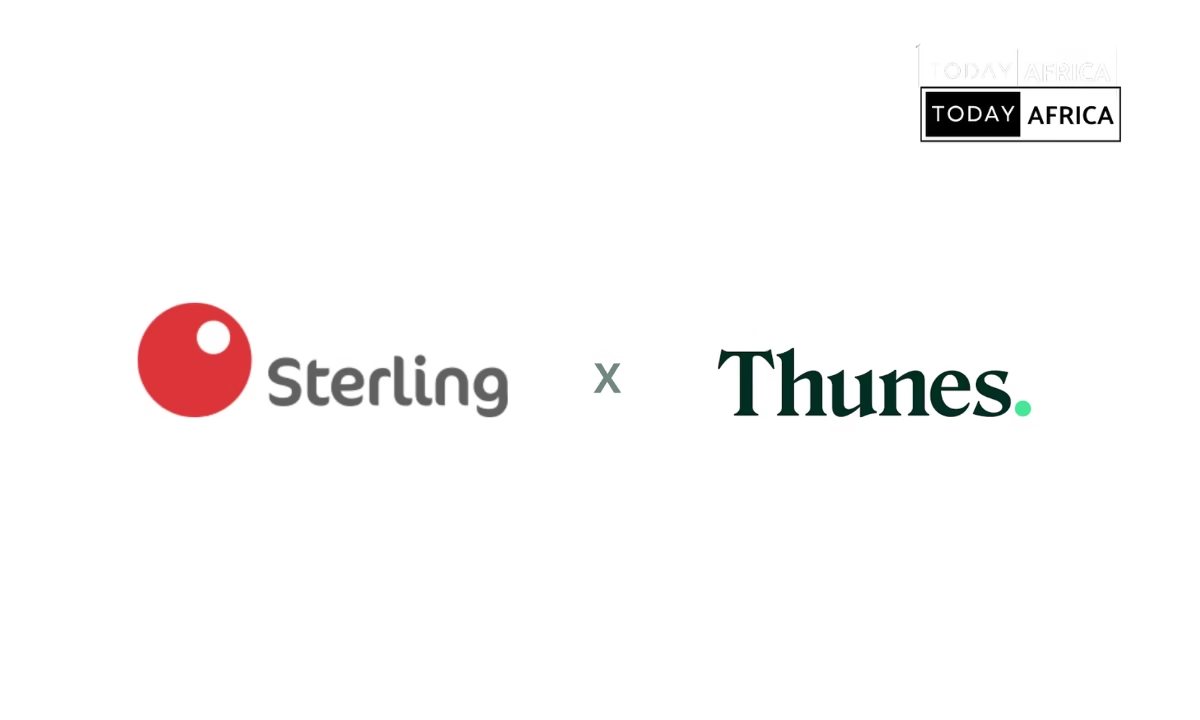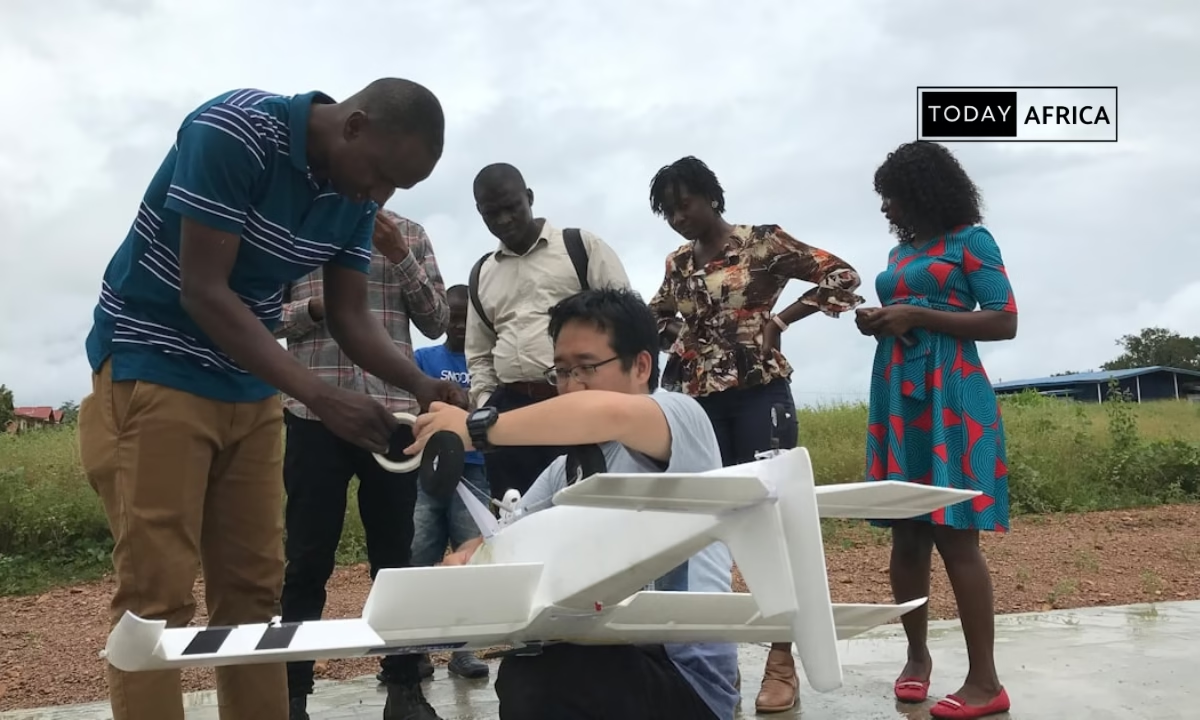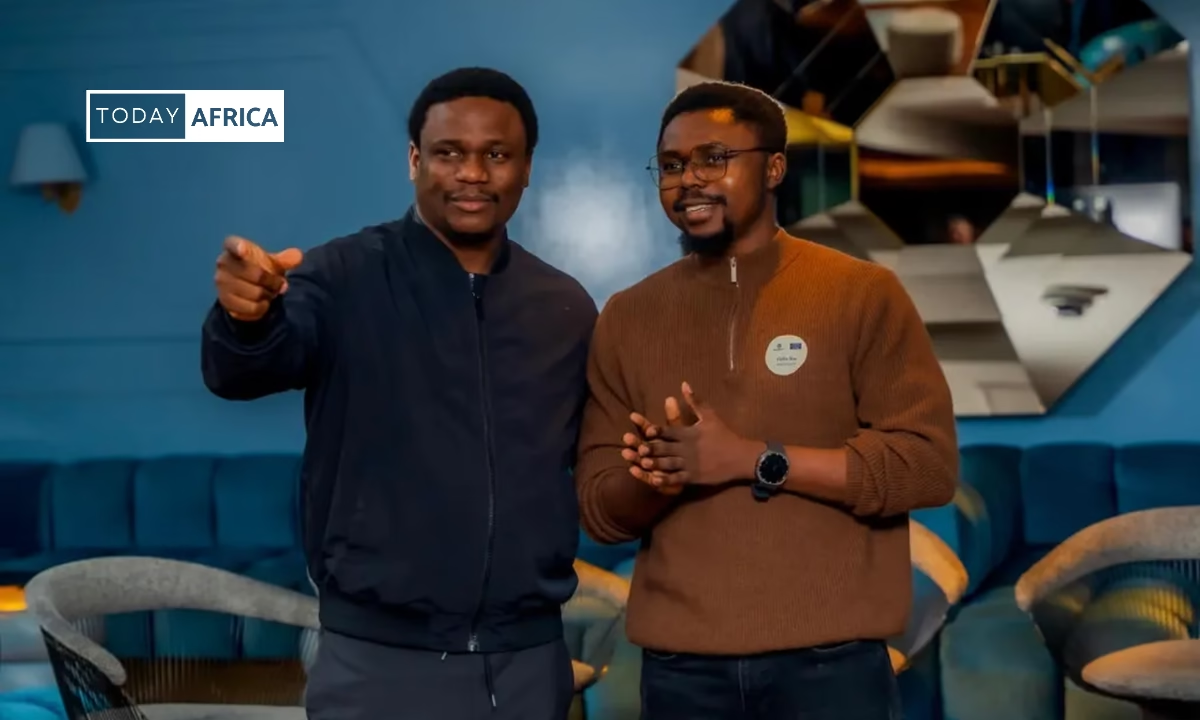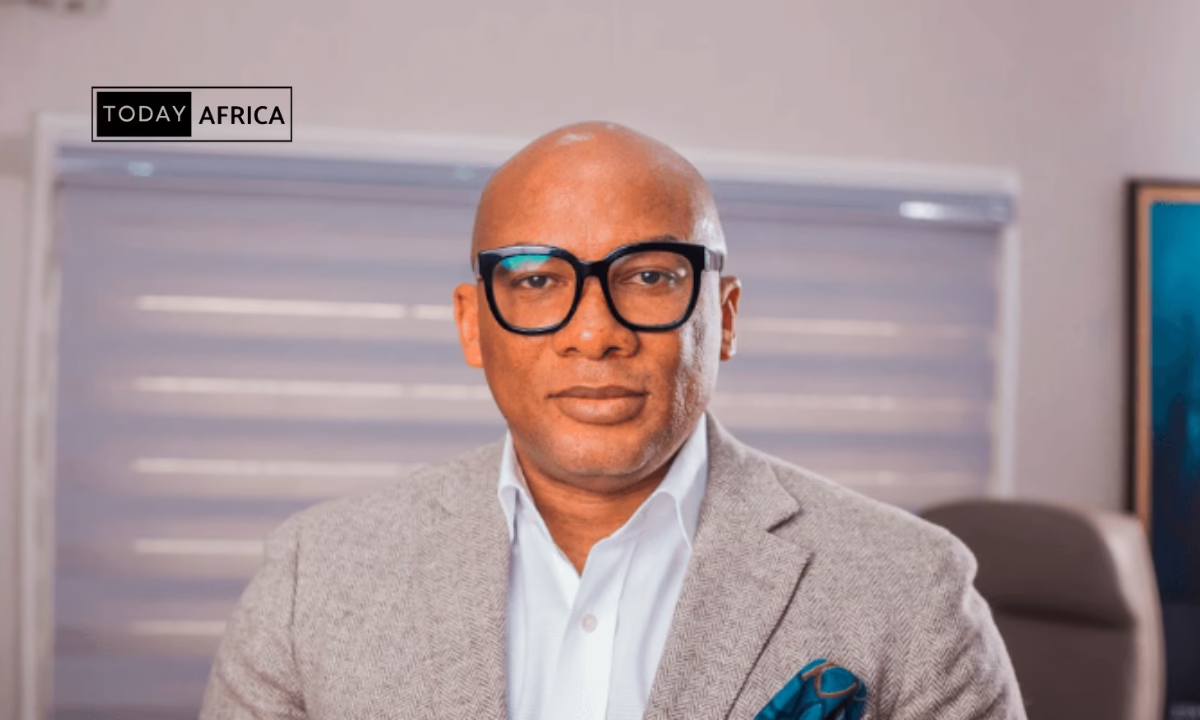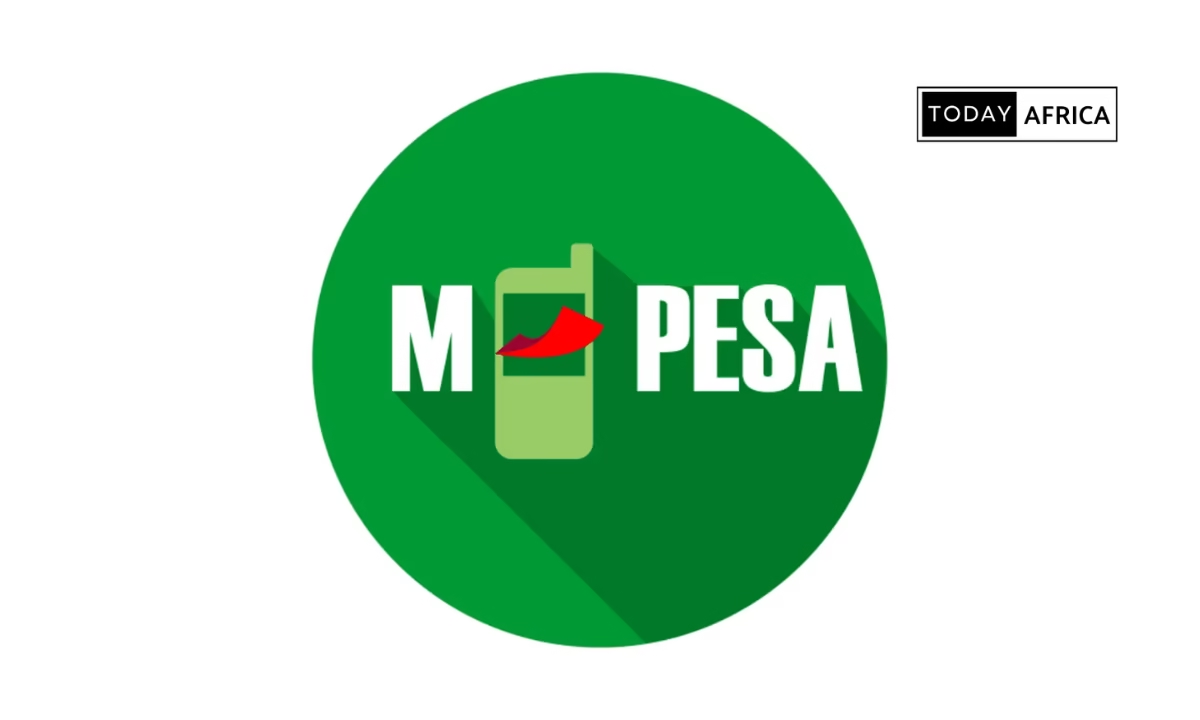In the mid-2010s, Africa’s e-commerce and fintech sectors were buzzing with optimism.
Internet penetration was climbing, smartphone adoption was accelerating, and a young, tech-savvy population was eager for innovative solutions that could make life easier.
Among the bold startups that emerged during this wave was Lipa Later, a Kenyan-born fintech company with a simple yet powerful promise: buy now, pay later.
Targeting Africa’s growing middle class, Lipa Later positioned itself as the bridge between aspiration and affordability, allowing consumers to access high-value goods and pay for them in manageable monthly installments.
The story of Lipa Later is more than just the tale of a startup that rose quickly; it’s a case study on the promises and pitfalls of scaling fintech in emerging markets.
This inside Lipa Later’s journey examines the strategies that propelled Lipa Later’s early success, the decisions, and the market conditions that contributed to its decline
Disclaimer: The data in this week’s episode of StoryLab is based on publicly available funding information as of August 2025 from reliable sources such as TechCrunch, TechCabal, Techpoint Africa, Startup Weekly, Fintech Futures), official statements (Mastercard press release, Lipa Later disclosures.
Founding Story
Lipa Later began as a grassroots solution to a familiar problem in Kenya: limited access to formal credit and high upfront costs for essential goods.
In 2017, Eric Muli – a technology entrepreneur and former employee at an MSP firm – launched an internal “BNPL” pilot to help co-workers at Alpha Force Security buy mobile phones on installments. Muli recalls that, at the time, “there was no BNPL solution for phones in Kenya”.
Inspired by this success, he teamed up with co-founders Michael Maina (who joined as COO) and Purity Maina (an early engineering lead) and formally launched Lipa Later in 2018.
Their vision was clear: let consumers purchase appliances, electronics, and other goods immediately, while Lipa Later covers the upfront cost and collects installments.
This “hire-purchase” model mirrored informal layaway schemes and M-Pesa loans, but with a fully digital, point-of-sale integration.
As Muli later explained, they built a “fully tech-enabled” BNPL product in 2018 to bring this model to the broader Kenyan market.
Problem addressed
Lipa Later targeted a critical gap in Kenya’s consumer finance. With only ~4% credit card penetration across Africa and many Kenyans lacking access to banks, large purchases (phones, TVs, furniture) were often out of reach.
Traditional microloans charged high interest, and informal ROSCAs/hire-purchase carried bureaucracy. Lipa Later’s solution enabled instant credit at the point of sale, reducing the barrier of a lump-sum payment.
It capitalized on Kenya’s explosive mobile-money adoption (M-Pesa became ubiquitous) and rising e-commerce: by 2021 78% of Kenyans had made or received digital payments (up from 2% in 2011)【71†】, and 59% had at least one financial or mobile wallet account (up from 2% in 2011)【72†】.
This digital-friendliness and the desire for affordable installment plans underpinned Lipa Later’s appeal.
See Also: Inside 54gene’s Journey: The Startup That Tried to Rewrite Africa’s Genetic Future
Early focus
Early on, Lipa Later focused on mobile phones and gadgets, partnering with local electronics retailers. Within a year of launch, it had signed on well-known brands.
For example, the Nigerian electronics retailer Hotpoint Appliances (selling Samsung and Tecno phones) and Apple-authorized reseller Sage Buyers in Uganda became key merchant partners.
Sage Buyers announced in March 2024 that “Ugandan iPhone dealers, Sagebuyers have partnered with Lipa Later… to enable their clients to receive iPhones and other Apple products… on credit”.
TechCabal reported that Lipa Later “boasts a wide array of exclusive merchants and world-renowned brands such as Carrefour, Apple, Tecno, Samsung…”.
Carrefour supermarkets (which have stores across Kenya, Rwanda, and Uganda) and Walmart (through Kenyan operations) were among its early retail partners, enabling customers to buy appliances and household goods on flexible terms.
By anchoring its service at respected stores, Lipa Later built trust: in its best PR, it proclaimed exclusive tie-ups with “global brands such as Carrefour, Apple, Tecno, and Samsung”.
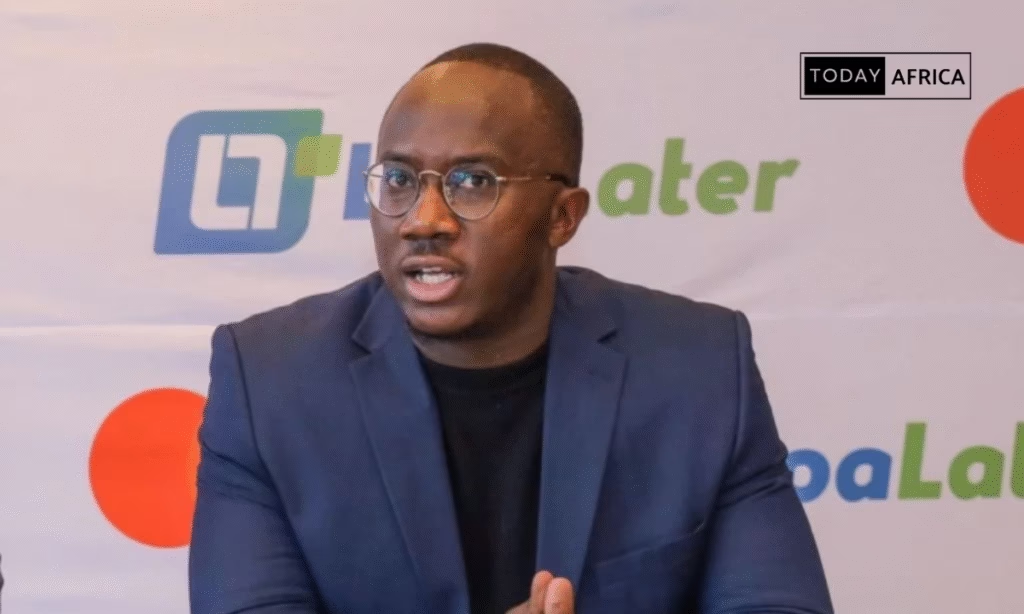
Key milestones
- 2017: Pilot BNPL for Alpha Force Security employees (Eric Muli’s team).
- 2018: Company founded (CEO Eric Muli, co-founders Michael Maina and Purity Maina) and product publicly launched in Kenya.
- 2019: Early acceleration and seed funding (participation by Founders Factory Africa, though amounts unpublicized).
- 2020–21: Expanded merchant base, added more retail categories (electronics, furniture, e-commerce). Raised a modest angel/seed round via Orbit Startups (2021).
- Jan 2022: Raised $12M pre-Series A (led by Cauris Finance, Lateral Frontiers, GreenHouse Capital, others). Entered Rwanda and planned Nigeria/Ghana expansion.
- Late 2022: Signed local merchant partnerships (e.g. Sage Buyers Uganda announced in March 2024) and launched LipaVismart POS solution with Carrefour East Africa.
- Aug 2023: Partnered with Mastercard to accelerate BNPL in Kenya, Uganda, Rwanda, Nigeria.
- Sept 2023: Secured $5M (KES 500M) in private debt.
- Oct 2023: Briefly ran a US Reg CF campaign, raising ~$70K from 84 investors.
- Dec 2023: Acquired distressed e-commerce platform Sky.Garden for ~KES 250M (about $1.9M) (a controversial move in hindsight).
- Mar 2025: Inability to raise new funding or cover liabilities led the board to enter administration, pausing all operations.
Throughout its rise, Lipa Later was hailed as a fintech pioneer. Founder Eric Muli and his team were profiled in interviews, and by early 2025, the company appeared (on paper) to be profitable with explosive growth.
Its mission – making credit accessible to “those previously excluded” – resonated with investors and media. As the Mastercard East Africa lead noted, this partnership “unlocks new opportunities for consumers and merchants to access digital payment solutions previously unavailable to them”.
In hindsight, those words foreshadowed a harsh lesson: a booming idea does not guarantee a sustainable business model.
Funding History
Over its lifespan, Lipa Later raised capital from a mix of African VCs, accelerators and debt financiers. Its fundraising timeline reflects both the startup’s ambitious growth plans and the challenges it later faced:
2019 (Pre-seed/Incubator)
Shortly after its inception, Lipa Later attracted support from ecosystem players. Startup accelerator Founders Factory Africa was an early backer (no amount disclosed). This period likely funded initial product development and local market trials. (Online profiles suggest Orbit Startups also provided seed support in 2021.)
Jan 2022 (Seed/Pre-Series A, $12M)
A major milestone came when Lipa Later announced a $12 million fundraising round. This investment was led by Cauris Finance (a French pan-African investment firm) and Lateral Frontiers (a venture firm affiliated with Lateral Capital).
GreenHouse Capital (a Nigerian fintech fund) also participated, along with venture accelerators like SOSV (MOX) and Sayani Investments. Platform Capital (Nigeria-based VC) later revealed it had invested as well.
Lipa Later described these funds as a pre-Series A, earmarked to “enhance the infrastructure, making our financing solutions even more accessible and convenient for our customers”.
In practice, that meant expanding the tech platform, onboarding new merchants, scaling customer acquisition, and hiring staff.
By then, the company was already doing double-digit growth and needed capital to fuel regional expansion into Nigeria, Ghana, and beyond.
Sept 2023 (Debt ~KES 500M ≈ $3.3M)
With high burn and still expansion-hungry, Lipa Later turned to debt financing. In September 2023 it closed a privately-placed KES 500 million (about $5.0M) debt issuance.
This five-year facility was arranged by investors, including its existing backers (Platform Capital and others). The startup intended to use this line to “spur growth” and invest further in technology and merchant partnerships.
(Founder Muli said the funds would help “further invest in technology and infrastructure” and make financing solutions more accessible.)
In parallel, Lipa Later launched a US Reg CF campaign on Republic, seeking another $1.2M (and eventually raising ~$70K) by October 2023. These efforts indicated a need for continuous funding just to sustain rapid growth.
Read Also: Inside M-Pesa’s Journey: An Idea That Changed the Way Africa Moves Money
Late 2023 (Acquisition financing)
In December 2023, Lipa Later paid KES 250M ($1.9M) to acquire Sky.Garden, a troubled e-commerce platform.
This use of capital drew scrutiny: many observers questioned spending scarce funds on an ailing asset while core liquidity was strained.
Contemporaneous reports noted Lipa Later was already “grappling with mounting obligations” by then.
2024 (Targeted $20M raise – unsuccessful)
Post-acquisition, Lipa Later publicly indicated it aimed to raise an additional $20 million (mix of equity and debt) to continue its expansion.
However, global venture appetite was waning by mid-2023, especially for fintech/BNPL, and Lipa Later failed to secure a new round in 2024.
TechCabal noted the company was “trying to raise $25M, the same figure it previously raised,” even as VC funding had tightened. No further major financings materialized.
In total, Lipa Later’s official fundraising tallies to roughly $16–17 million (across equity and debt), according to multiple sources.
Its earliest investors included Founders Factory Africa (2019), Orbit Startups (2021), and Lateral Frontiers/Lateral Capital and GreenHouse Capital (2022).
Later rounds saw Platform Capital, Swiss impact fund Axian, and venture studio Sayani pitch in.
Debt financiers included Kenyan issuers and even a £5M proposal from UK fund Advanced Global Capital in 2025 (although that bid came after things fell apart).
Use of funds
While detailed breakdowns are proprietary, Lipa Later’s public messaging and investor comments shed light on priorities.
According to CEO Muli, the 2022–23 funds were spent on product development, scaling the tech platform, and expanding the merchant network. For example, he said the capital would “enable us to enhance [our] infrastructure” and make Lipa Later’s offerings more accessible.
The company invested heavily in its proprietary credit-scoring and onboarding systems (machine learning models, mobile app, and APIs).
Funds also went toward marketing and hiring (recruiting in Nairobi and Lagos to support each market), as well as subsidizing merchant payouts – essentially bridging the gap between paying stores upfront and collecting consumer repayments later.
The debt financing in 2023 was explicitly aimed at “expansion plans in Kenya and other markets”.
However, aggressive deals (such as the Sky.Garden purchase) and the high costs of delayed revenue created cash flow pressures that eventually outstripped the available funding.
TL;DR: Funding history
| Year | Investor(s) | Funding Amount (USD) | Purpose / Use of Funds |
|---|
| 2019 | Founders Factory Africa (incubator), Orbit Startups (seed support) | Undisclosed | Initial product development, pilot operations in Kenya, building core technology and early merchant partnerships. |
| Jan 2022 | Cauris Finance, Lateral Frontiers / Lateral Capital, GreenHouse Capital, Platform Capital, SOSV (MOX), Sayani Investments | $12 million | Scaling infrastructure and tech, onboarding merchants, expanding regional operations (Uganda, Rwanda, planning Nigeria/Ghana), hiring and marketing. |
| Sept 2023 | Platform Capital, existing backers, other debt financiers | ≈ $5 million (KES 500 million) | Bridge funding to spur growth—supporting regional expansion, technology build-out, and covering merchant payouts amid cash-flow pressures. |
| Oct 2023 | Public equity crowdfunding (Republic platform) | ~ $70,000 | Supplementary funding for operations; modest amount raised amid ongoing funding challenges. |
| Dec 2023 | Internal capital (equity/reserves) used to acquire distressed asset Sky.Garden | ~ $1.9 million (KES 250 million) | Strategic acquisition to diversify into e-commerce; aimed at vertical integration but contributed to liquidity strain. |
Strategies that Fueled Growth
Lipa Later’s early rise was driven by a multifaceted strategy that leveraged Africa’s unique market dynamics and positioned it as a first-mover BNPL provider. Key elements included:
1. Targeting the underbanked
At its core, Lipa Later aimed to serve consumers shut out of traditional credit. Only about 3–4% of Africans own credit cards, and many Kenyans rely on M-PESA and cash for payments.
Lipa Later pitched itself as a bridge for this gap. The Mastercard partnership press release emphasizes that the service would “bridge the gap in financial inclusion, benefiting the underbanked population and individuals with limited access to finance”.
In practice, this meant offering credit lines with minimal documentation. Using machine-learning algorithms and alternative data, Lipa Later could offer approval “in seconds, without the need for bulky documentation”.
This appealed to tech-savvy young professionals and small traders who lacked a formal credit history.
By lowering the barriers to entry, Lipa Later tapped a huge potential customer base: Kenya alone had 84% financial inclusion by 2021, but many had no access to loans or credit cards.
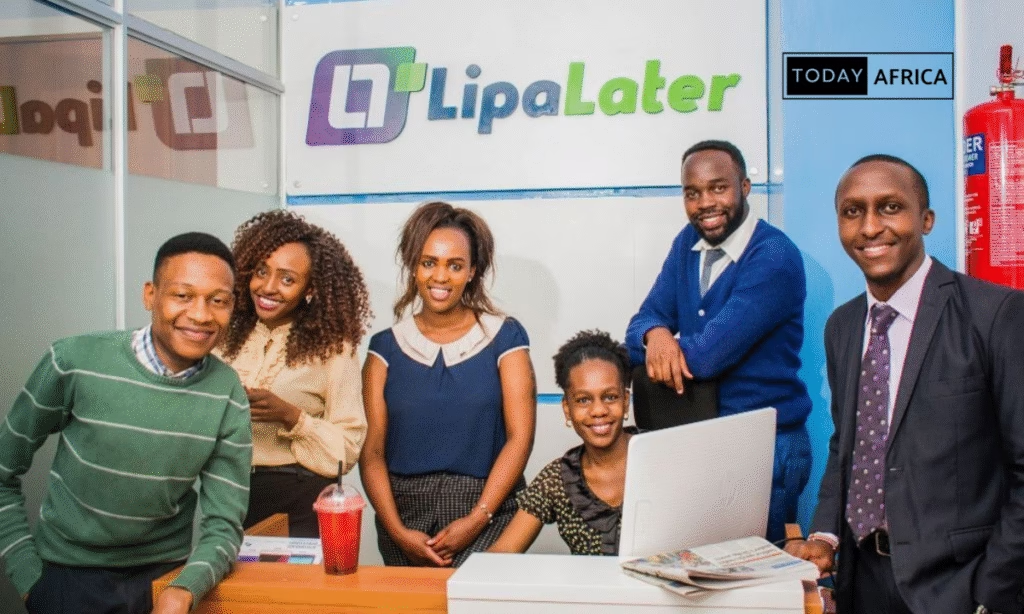
2. Digital-first, seamless onboarding
Lipa Later’s platform was fully mobile and API-driven. Customers could sign up on the app or via a merchant’s point-of-sale without paperwork.
This contrasted with traditional loans. As one report notes, its “proprietary credit scoring and machine learning system enable customers to sign up and get a credit limit in seconds”.
Lipa Later also built an e-commerce integration: a developer API allowed online retailers to embed Lipa Later checkout (at no immediate cost to the consumer, paid monthly).
The TechCrunch profile explained how Lipa Later integrated into online stores to process monthly installment payments.
By keeping everything digital, it cut processing costs and delivered a slick user experience – a key selling point as digital account penetration surged across Africa (e.g., Kenya’s adult digital account ownership jumped from 2% in 2011 to 59% in 2021【72†】).
See Also: Interswitch’s Journey: From Pioneering Payments to Shaping Africa’s Fintech Future
3. Strong B2B merchant relationships
Rather than marketing primarily to consumers, Lipa Later leaned on retailers. Its pitch to stores was compelling: by offering BNPL at checkout, merchants could boost sales and average basket size.
For example, Mastercard noted that BNPL “enables merchants to increase their average basket size, cater to a wider customer base, and enhance their ability to provide more products”.
Lipa Later paid merchants up-front (minus a fee) and took on the risk of consumer repayment. This guaranteed retailers received their money quickly, which made them eager partners.
The strategy was to win over established stores and brands. In addition to tech gadget shops, Lipa Later tied up with supermarkets (Carrefour) and even a major retail chain (through a Walmart affiliate).
By mid-2023, it claimed a “world-class merchant portfolio with brands such as Walmart and Carrefour”.
These exclusives helped Lipa Later stand out: as TechCabal noted, it “has a wide array of exclusive merchants and world-renowned brands such as Carrefour, Apple, Tecno, Samsung…”.
Such partnerships also reinforced trust – consumers felt safer buying from known retailers with a formal BNPL option.
4. Consumer-friendly terms and pricing
Lipa Later generally charged interest or fees that undercut informal options. In Rwanda, for example, it offered “a flat monthly interest of 2.3%” on purchases at participating stores (as reported in early 2022).
By bundling repayment into fixed, short-term installments (often 3–12 months) and providing transparent terms, it made credit easy to understand. There were no hidden annual fees or compounding interest.
The affordability of its plans encouraged take-up: a young professional could snag an iPhone 13 by paying roughly KES 2,050/week with Lipa Later, compared to much higher microloan rates.
(Lipa Later also occasionally promoted zero-interest or low-deposit offers in partnership deals, further boosting adoption.)
5. Regional expansion as a growth engine
Instead of staying in one market, Lipa Later pursued a cross-border play. Its management believed the BNPL model could be replicated across multiple African countries with similar pain points.
After proving the concept in Kenya, the company quickly rolled out in Uganda and Rwanda. Its architecture was built from day one to handle multiple currencies and regulatory environments.
As a startup founder, Muli said, “We are confident we can achieve our goal of making financing more accessible and inclusive for all” – not just in Kenya.
The Mastercard partnership explicitly targeted expansion “starting with Kenya and expanding to Rwanda, Uganda, and Nigeria”, signaling this regional strategy.
6. First-mover positioning and branding
When Lipa Later entered the scene in 2018, few formal BNPL options existed in East Africa. Its founders emphasized being pioneers: “no one was doing BNPL for phones… so we did it ourselves”.
This gave them press buzz as innovators. They branded Lipa Later as a “digital consumer credit” fintech committed to empowerment.
By late 2022, investor Ruby Nimkar (Lateral Frontiers) touted the company as “product and customer-led, scalable across multiple markets”, highlighting its tech focus.
Meanwhile, Mastercard’s support in 2023 lent prestige. This positioning helped Lipa Later win awards (it was listed by the Financial Times as among Africa’s fastest-growing firms) and recruit talent.
The narrative of social impact – giving “flexible financing options at checkout” and “creating seamless shopping experiences” – also reinforced its appeal to regulators and donors concerned with financial inclusion.
Read Also: Moniepoint’s Journey: From POS Terminals to Africa’s Fintech Powerhouse
Competition in the BNPL & African Fintech Ecosystem
By its early start, Lipa Later held an advantageous position in Kenya’s nascent BNPL scene.
However, it was never unchallenged. The African fintech ecosystem features both direct BNPL competitors and adjacent credit providers, as well as global players eyeing the market.
1. Local BNPL competitors
In Kenya and East Africa, several startups have launched with similar models. Lipa Later’s own 2022 profiles mentioned rivals like Aspira (Kenyan BNPL, backed by Tanzania’s Blink Investments) and Miti (Kenya), offering installment financing.
South African BNPLs such as PayJustNow and Payflex (now Zip) are household names in that region and are slowly seen in Kenya too. Fintechs like Pezesha (a small-business lending platform) and PayQart also encroach on consumer credit, though often with a peer-to-peer twist.
Most directly, companies like Cashpor (Uganda BNPL) or the e-commerce platforms Jumia (with partners Easybuy/CredPal) in Nigeria have rolled out checkout financing.
The TechCabal funding story noted that Lipa Later would ultimately “contend with competition from South Africa’s Payflex and PayJustNow, and Nigeria’s PayQart and Carbon Zero”.
2. Broader fintech substitutes
More indirectly, Lipa Later faced alternatives like microfinance banks (Tala, Branch), savings-and-credit cooperatives, and even mobile-money loans.
For instance, mobile borrowing products like M-Shwari (with 19%+ interest) or branchless lenders offered quick cash loans that some consumers used to buy goods.
In that sense, Lipa Later had to differentiate by tying credit strictly to point-of-sale purchases.
CEO Muli often contrasted BNPL with microlending: one TechInAfrica article explained Lipa Later’s “hire purchase” model was a digital analog of traditional retail credit, designed for consumers to access aspirational products while spreading cost.
That positioning – installment for durable goods, rather than cash for anything – was Lipa Later’s unique value proposition.
3. Global BNPL players
Giants like Klarna, Affirm, and Afterpay dominate BNPL in Europe, the US and Australia, but have so far had a minimal footprint in Africa.
The market is less mature, and global firms have focused on local partnerships. (For example, PayPal launched a limited BNPL service in Nigeria via a local retailer.) Therefore, Lipa Later did not directly face off with these U.S./European startups.
However, global trends did put pressure on the concept: by 2023, many international BNPL firms were struggling under rising defaults and regulatory clampdowns.
This “BNPL bust” indirectly tightened investors’ willingness to pump big new rounds into the model.
Indeed, TechCabal noted Lipa Later’s 2023 fundraising was happening “at a time when VC appetite for growth and late-stage startups is lower than it has ever been”.
In other words, investors saw what was happening globally with Affirm’s stock crash and Klarna’s layoffs and grew skittish.
4. Competitive advantages and positioning
Compared to informal credit, Lipa Later offered a streamlined digital product. Unlike ROSCAs (chamas), there was no social pressure or group liability – each customer managed their own credit.
It also promised more convenience than traditional MFIs: no collateral, no manual paperwork. .
In the crowded fintech space, Lipa Later often touted itself as the “SME bank” for retailers (aiming to serve 100,000 small merchants by 2024).
Its exclusives with large retailers and branding as an African-owned BNPL gave it a distinct identity.
5. Regulatory environment and pressures
The regulatory landscape was in flux. During Lipa Later’s run, BNPL products in Kenya were largely unregulated. Over-arching laws like the Microfinance Act or National Credit Act did not explicitly mention BNPL.
By mid-2025, Kenyan authorities were drafting BNPL-specific guidelines (pushing for transparency and caps), but nothing was enforceable when Lipa Later fell.
That regulatory uncertainty meant players were in a gray zone: no one was policing interest rates or lending practices.
On the flip side, operating in multiple countries forced Lipa Later to navigate different rules and compliance regimes (e.g., national payment system licenses, foreign exchange controls in Nigeria).
Such cross-border complexity can strain a startup.
6. Macro and market entry threats
Additionally, larger macro trends exerted pressure. In 2023–2024, Kenya introduced new taxes on goods, and the shilling weakened considerably.
These factors made inventory more expensive and reduced consumers’ disposable incomes. At the same time, global fintech funding was drying up, making it hard for Lipa Later to top up its cash reserves.
New entrants in Nigeria (like local fintechs partnering with Jumia) were tapping into BNPL hype too.
Internally, Lipa Later even suspected a former executive of poaching trade secrets to build a rival, a dispute that went to court in early 2024.
All of these competitive and external forces chipped away at Lipa Later’s dominance.
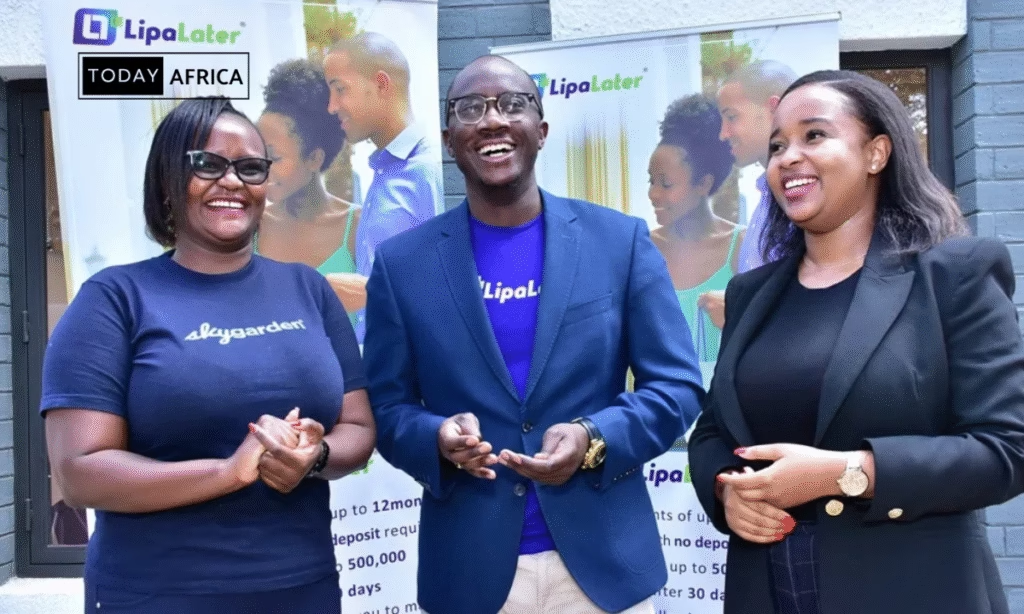
Impact on Society
Despite its troubles, Lipa Later did have tangible positive effects on consumers and merchants in East Africa.
By offering installment credit, it expanded purchasing power and stimulated sales. Some key impact figures include:
1. Consumers served
By late 2023, Lipa Later reported serving ~350,000 consumers across its markets.
These were mostly middle-class and tech-savvy customers who used Lipa Later to buy smartphones, laptops, appliances and even motorcycles.
Instead of saving months to afford a fridge, a customer could use Lipa Later’s “Shop Now Pay Later” to take it home immediately and pay in easy installments.
For many, this was life-changing. One Ugandan user at Sage Buyers recounted in local media that Lipa Later enabled him to buy an iPhone when he otherwise couldn’t afford the lump sum. (Such human-interest stories were occasionally covered in blogs and radio shows.)
2. Merchants onboarded
Lipa Later signed up tens of thousands of retailers. According to its own data, it had over 30,000 merchants on the platform by 2023.
These ranged from small electronics shops to furniture outlets and even large chains. Key merchant partners like Samsung-authorized dealers, Tecno resellers, and Carrefour supermarkets all offered the Lipa Later option at checkout.
For these merchants, sales reportedly jumped. Internal company surveys (shared by investors) showed that stores offering BNPL through Lipa Later often saw 10–20% higher ticket sizes and increased foot traffic.
Mastercard’s statement affirms this effect, noting that BNPL “enables merchants to increase their average basket size and cater to a wider customer base”. This meant goods that might have sat unsold now moved faster.
3. Transaction volume
By 2023, Lipa Later had made about $20 million in financing across merchants.
In other words, it effectively loaned out $20M worth of purchases by underwriting customer installments (earning interest/fees on this volume).
While this is small relative to Kenya’s GDP, it represented a significant chunk of consumer finance within its niche.
Combined with partner platforms (like Sky.Garden’s e-commerce sales after acquisition), the payment volumes processed through Lipa Later’s systems grew rapidly – reportedly enough to generate KES 2 billion in revenues if they had been fully collected.
4. Customer testimonials and stories
Press and social media carried numerous anecdotes. For example, a shop-owner in Kigali told how she partnered with Lipa Later to boost sales of flat-screen TVs – customers who used BNPL tended to upgrade to larger, more expensive models than they could pay cash for.
Similarly, in Nairobi, a student celebrated being able to buy a new laptop through Lipa Later in exchange for small weekly payments, something impossible before.
Importantly, by bringing high-value purchases into installment plans, Lipa Later gave many families access to appliances and electronics that had been out of reach.
5. Wider financial inclusion
Beyond individual merchants and consumers, Lipa Later’s presence nudged the ecosystem toward more inclusive financing.
By demonstrating that a Kenyan startup could partner with Carrefour and Mastercard, it signaled to banks and regulators that there was demand for innovative credit products.
Its PR emphasized “stimulating economic growth and driving positive change” through BNPL. Some observers note that Lipa Later helped popularize the BNPL concept in East Africa, paving the way for others.
Tech analysts credit it with raising awareness among policymakers: BNPL’s popularity put pressure on regulators to modernize consumer protection laws.
Challenges Lipa Later Faced
Despite its early promise, Lipa Later encountered severe hurdles – both internal and external – as it scaled.
Many of these challenges stemmed from the BNPL model itself and the harsh realities of operating across multiple African markets.
Key challenges included:
1. Credit risk and defaults
Lipa Later carried the credit risk by paying merchants upfront while waiting for consumers to repay. Over time, especially by 2023–24, defaults began to mount.
As the economy slowed and inflation eroded incomes, more borrowers struggled to meet installment payments.
Public records hint at this strain: for instance, a small consultancy case (Africa Foresight Group) ended with Lipa Later admitting a debt of ~$13,500 and being ordered to pay it.
Internally, employees reported that collections were lax and recovery processes were weak; many customers who had multiple Lipa Later loans were in serious delinquency.
In April 2025, startup analysts noted that Lipa Later’s BNPL model had become “increasingly unsustainable under economic pressure”, prompting the company to pitch a pivot to invoice factoring (advancing funds on merchant receivables) instead of consumer credit.
This admission underscores how rising bad debts severely undermined its business.
2. Cash flow strain
The mismatch between paying merchants immediately and waiting months for consumer payments created liquidity pressure. Even as loans came in, the cash had a long tail.
Lipa Later sought external financing (debt and equity) just to keep that cash cycle going – essentially borrowing to pay previous obligations.
By late 2024, reports indicated “employees went unpaid, suppliers were demanding settlements”.
This was a classic cash-flow crunch: the company had to keep fresh funding flowing simply to stay solvent. The $5M debt raise in Sept 2023 was meant to alleviate this gap, but it was barely enough.
And the December acquisition of Sky.Garden (a cash-burning e-commerce site) further stretched liquidity – an odd decision “at a time when the company was already defaulting on obligations”.
3. Regulatory and operational hurdles
Operating in multiple countries brought regulatory complexity. Lipa Later had to navigate Kenya’s Central Bank rules, Uganda’s payment licensing requirements, and Rwanda’s nascent fintech regime – each with its own compliance costs.
Although African regulators were just beginning to craft BNPL guidelines (for example, draft rules in Kenya calling for clearer disclosures), no coherent framework existed, leaving Lipa Later exposed to legal uncertainty.
On the ground, routine operations – like verifying customers, integrating with different point-of-sale systems, and handling local currencies – proved tougher than anticipated.
Scaling customer service (in three new countries!) also became a challenge. For example, agents in rural Uganda often needed extra hand-holding to understand the digital platform, which was a drain on resources.
4. Leadership and governance strains
As finances tightened, tensions emerged at the top. Reports from early 2025 indicate Founder/CEO Eric Muli attempted to raise a $5M loan after the board had already agreed to administration.
This raised questions about governance: the founder may have overstepped by seeking deals during a court-appointed process.
Internally, at least one co-founder (Purity Maina) departed the company prior to 2024, hinting at potential disagreements over strategy or ownership (Tracxn profiles list her as an “ex-co-founder” by then).
Morale suffered as payroll issues arose – by March 2025, staff had gone unpaid for months, eroding trust.
5. Poor timing and strategic missteps
Several critics point to specific decisions that exacerbated problems. The late-2023 Sky.Garden acquisition is often cited as a major blunder.
Investors and industry observers were “puzzled by the timing,” given that Lipa Later was already struggling to meet its own obligations.
Funding a distressed e-commerce business in the middle of a liquidity crisis was risky – one tech analyst quipped that it felt like “buying a sinking ship” when life vests were needed.
Furthermore, the company tried to fund rapid cross-border expansion before firmly establishing profitability at home.
Nigeria and Rwanda rollouts required capital for local teams, marketing, and regulatory compliance; stretching resources thin across too many fronts left Lipa Later vulnerable.
6. External economic headwinds
The broader macroeconomic environment also worked against Lipa Later. Kenya’s inflation rose into the high single digits in 2023, reducing disposable income for its target consumers.
The Kenyan shilling depreciated significantly that year (from ~KES 110 to 135 per USD by early 2024), making imported inventory (electronics, phones) pricier – a cost that either had to be passed on to customers or absorbed by Lipa Later’s margins.
Tax increases on equipment further squeezed retail prices. In short, demand weakened just as costs climbed. Meanwhile, global financial markets were tightening: Africa’s tech funding dropped sharply post-2022.
One analysis noted that Lipa Later sought funding “at a time when VC appetite… is lower than it has ever been”.
7. Operational inefficiencies
Behind the scenes, running a complex BNPL engine proved difficult. Fraud control and underwriting processes, while automated, still required human oversight.
As volumes grew, Lipa Later’s compliance and collections teams became overwhelmed, leading to errors (like duplicate loans) and slow recovery.
The company also did not have a mature risk management department; it relied on credit-scoring models that had not been time-tested in downturn conditions.
When early warning signs of delinquencies appeared, Lipa Later lacked robust contingency plans.
8. Investor and legal disputes
The descent into administration unleashed further turmoil. By early 2025, creditors were clamoring.
A notable example was a consulting firm (Africa Foresight Group) that sued Lipa Later for an unpaid $13,516 contract – and won, when court records showed Lipa Later internally admitted the debt.
Though small in amount, this case was symptomatic: it publicly aired the company’s inability to pay even modest obligations.
Additionally, the attempted $5M loan deal with AGC in April 2025 caused a flap: media questioned whether a founder could raise funds when the board had no power.
All this legal noise damaged Lipa Later’s credibility with investors and partners.

Why Lipa Later Struggled
Lipa Later’s decline offers several cautionary lessons for African fintechs – especially those in the BNPL or consumer credit space.
In retrospective analysis, key reasons emerge:
1. Unsustainable growth without disciplined underwriting
Lipa Later grew fast but did not simultaneously tighten credit criteria. Its models likely underestimated default risk in a downturn. As defaults rose, profitability evaporated.
This reflects a classic pitfall: BNPL can mask losses during good times, but without strong credit governance, a burst of bad debt can sink the ship.
Future BNPL startups must invest heavily in risk analytics and maintain reserves for losses.
Sound underwriting – using credit bureau data, proper scoring, even requiring collateral or guarantors – is crucial before fueling explosive expansion.
2. Overextension into multiple markets
While regional expansion helped Lipa Later grow its user base, it also spread resources thin. Entering Uganda, Rwanda, and targeting Nigeria all at once meant duplicate staffing, compliance, and marketing costs.
Each new country brought its own challenges. In hindsight, Lipa Later might have benefited from consolidating its Kenyan business first, proving unit economics, then cautiously entering a second market with tighter controls.
Its story illustrates the danger of “moving on before mastering home”. Other African BNPLs might therefore take a more measured rollout, focusing on local profitability before going multiplatform.
3. Poor unit economics and investor timing
Lipa Later’s business model subsidized merchants and accepted payment delays, which means the unit economics must be very tight to break even.
Unfortunately, the high cost of capital (interest on debt) and potential write-offs ate into any margin.
Additionally, the collapse coincided with a shift in investor sentiment: globally, BNPL was no longer in vogue by 2024.
This made it hard to raise the next round, even when Lipa Later still had institutional backing.
The lesson: founders should be wary of fundraising in declining hype cycles, and ensure sufficient runway (or conservative burn) to weather funding winters.
4. Strategic missteps (like Sky.Garden)
Acquiring a distressed e-commerce platform was arguably a misallocation of scarce funds. Investors criticized this move as it distracted from core operations.
The failure to integrate Sky.Garden profitably compounded cash issues. Wise strategic planning requires evaluating the timing: acquisitions should not be done at the expense of the parent company’s viability.
In this case, a spin-off or separate investment deal might have been safer.
5. Regulatory and compliance underestimation
Lipa Later’s cross-border reach meant legal risks in three jurisdictions, but little in the way of a global compliance framework.
As BNPL regulations started to form (e.g., consumer disclosure requirements), a lack of compliance could have triggered fines or forced changes in product design.
For future operators, engaging regulators early and building flexible compliance processes is critical. One positive example: Lipa Later did partner with Mastercard, which helped navigate regulatory circuits.
But in general, the company could have been better prepared for oversight.
6. Market reality vs. hype
Finally, Lipa Later’s fall underscores that investor enthusiasm (which can inflate valuations) must align with market reality.
The optimism that “BNPL has legs in Africa” – as Techpoint optimistically put it when an acquirer bid for Lipa Later – needs to be tempered by fundamentals.
Stakeholders (founders, VCs, banks) should critically assess credit loss rates, customer acquisition costs, and actual profitability.
Lipa Later’s story likely made some investors more cautious about pouring capital into other African BNPL startups without seeing clear risk mitigation.
Lessons for the Ecosystem
African fintech entrepreneurs can draw several takeaways:
- Prioritize credit-risk management: No matter how novel a fintech product, managing repayments is paramount. Robust credit-scoring, reminders, and collection processes are essential. Lipa Later’s pivot to invoice factoring in crisis suggests it realized too late that factoring (a trade-finance approach) was lower-risk than consumer creditstartupresearcher.com. Early emphasis on risk can prevent catastrophic default spirals.
- Balanced expansion: A measured geographic and category rollout is wiser than a “growth at all costs” approach. Focus on building a profitable unit (e.g. one country or core vertical) before exporting the model. Lipa Later’s founders were ambitious, but others might learn to grow incrementally – ensuring, for example, that the Kenyan business was solidly profitable before fully committing to Nigeria’s much bigger market.
- Sustainable funding strategy: Relying heavily on external capital can create vulnerabilities. Startups should have contingency plans if the next round doesn’t materialize. Lipa Later’s heavy burn needed constant fundraising; when markets cooled, that strategy unraveled. Moving forward, founders could lock in long-term credit lines, form strategic partnerships (like Lipa Later did with Mastercard), or consider revenue-based financing to reduce dilution.
- Navigating regulation: BNPL operators must proactively engage regulators. The upcoming Kenyan BNPL rules (with clear disclosure obligations) will apply to anyone in this space. Lipa Later’s administration highlighted that regulators may also push for mechanisms like credit registries (to avoid “debt stacking” across apps) and interest caps. New startups should stay attuned to such changes and build compliance flexibility into their systems.
- Influencing investor appetite: Lipa Later’s collapse did cause a shakeout in BNPL funding in Africa. While it doesn’t mean the model is dead, investors have become more selective. For example, some VC funds have since pivoted to other fintech sub-sectors (payments, savings) or to smaller, more established BNPL firms. However, market analysts still see huge unbanked populations and e-commerce growth, meaning opportunities remain. Indeed, after Lipa Later, we’ve seen new entrants (e.g. JUMO and CredPal in Nigeria, Algbra in South Africa) apply BNPL in niche ways, often emphasizing risk management. We expect African BNPL to survive but evolve: platforms will likely incorporate credit bureaus, buy-now-pay-later insurers, or hire-purchase hybrids to prevent another Lipa Later scenario.
As of the time of writing, Lipa Later is at a crossroads under administration. Its story – once a celebrated “success story in East African fintech” – now serves as a potent case study in both innovation and caution.
Entrepreneurs in Africa’s fintech scene will remember that while servicing unmet credit needs is laudable, doing so sustainably is harder than it looks.
Conclusion
Lipa Later’s journey encapsulates the promise and perils of BNPL in Africa. On one hand, it vividly demonstrated how fintech can extend credit to underserved consumers and turbocharge retail sales, leveraging mobile technology and strategic partnerships.
On the other hand, it exposed the structural fragility of a credit business expanding too fast without robust risk controls. The biggest insight is a simple one: financial inclusion drives growth, but financial discipline prevents collapse.
Lipa Later’s rise showed the demand for digital lending products; its fall showed that too much expansion or loose underwriting can undo a promising venture.
Above all, Lipa Later proves that in Africa’s dynamic fintech ecosystem, a sparkling idea must be matched by sound economics and governance.
Sources: (TechCrunch, TechCabal, Techpoint Africa, Startup Weekly, Fintech Futures), official statements (Mastercard press release, Lipa Later disclosures), interviews with company executives, and industry analyses.
Leave a comment and follow us on social media for more tips:
- Facebook: Today Africa
- Instagram: Today Africa
- Twitter: Today Africa
- LinkedIn: Today Africa
- YouTube: Today Africa Studio

